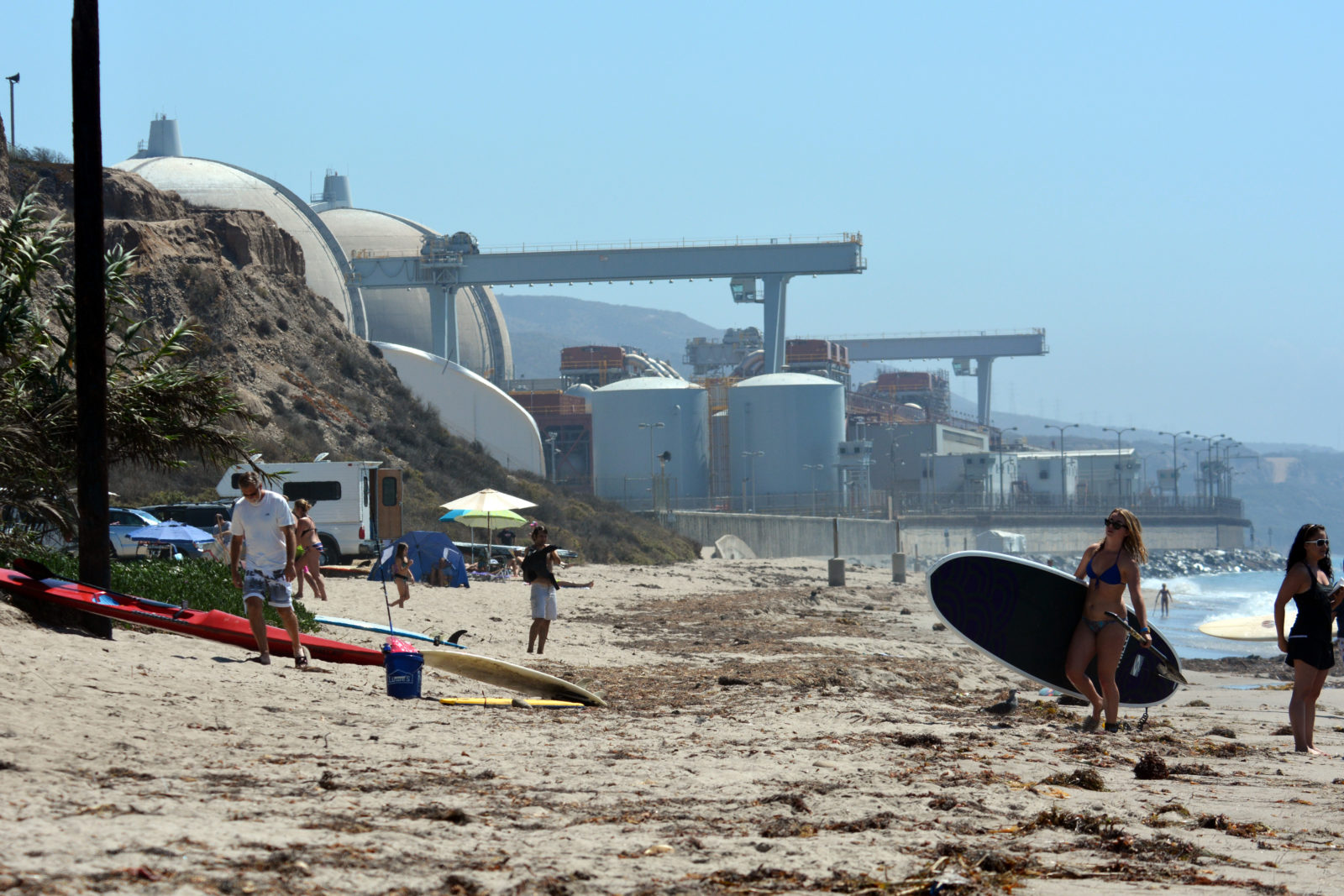It may hard to believe in 2017 that the idea ever went forward, but in the pre-Three Mile Island, Chernobyl and Fukushima days of 1969, the first reactor of the San Onofre Nuclear Generating Station (SONGS) went on-line, located on the beach near the San Diego and Orange county line just south of San Clemente.
The namesake San Onofre State Beach (i.e., Trestles) was established just north of the facility in 1971, and the second and third reactors went on-line in 1983 and 1984. Legend has it surfers used to enjoy paddling out near the facility due to the abundance of warm seawater that discharged back into the sea from the plant, where it was used as part of the plant’s cooling system to cool off super-heated fuel rods.
The original reactor was shut down in 1992 as the second and third reactors headed into their second decade, but following several high-level press accounts of mismanagement and a series of accidents, culminating in the shutdown of reactor two in 2012, SONGS reactors two and three were decommissioned by Southern California Edison in June 2013. The plant is currently undergoing the de-comissioning process, with the plant’s lease due to expire in 2022.
While the closure of San Onofre may be good news given the plant’s spotty safety record over the course of its service and the controversial nature of nuclear power since 1979 – greenhouse gas emissions from power plants in California have increased by 35 percent since 2011, which some say is due to the early closure of San Onofre. Even more controversial is the plant’s legacy of nuclear waste which, while small, remains in the facility just yards from the Pacific Ocean.
How the nuclear waste will be handled and where it will go became an issue in the 49th congressional district in the 2016 race between GOP incumbent Darrell Issa and Democrat Doug Applegate (whom this club gave an early endorsement to). How Issa will pivot on San Onofre ahead of 2018 remains to be seen, particularly as Applegate and new Democratic challenger Mike Levin stake out positions.
The term “on the beach” in the title of this post is used half-ironically too, as it was also the name of a 1957 novel by Nevil Shute, and a 1959 Stanley Kramer movie starring La Jolla native Gregory Peck. Both the book and the movie depict the final months on Earth following a nuclear holocaust – typically viewed from the periscope of a submarine that escaped the initial disaster.
Photo by Don Logan

